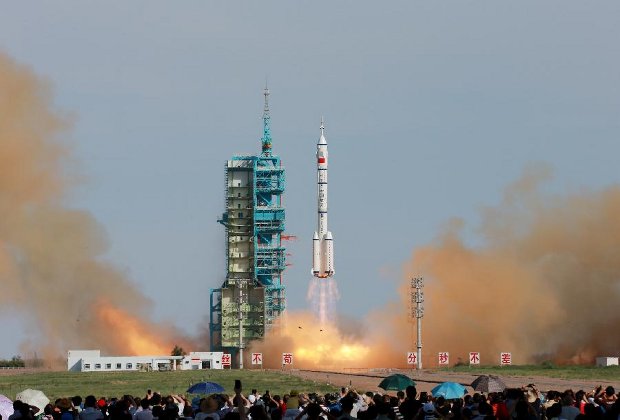
In China it was afternoon when the Chinese Shenzhou 10 spacecraft was successfully launched using a Long March 2F/G rocket from the Jiuquan Satellite Launch Center. After its separation from the second stage of the rocket, the spacecraft regularly entered low Earth orbit to start its mission scheduled to last 15 days.
The crew of the Shenzhou 10 spacecraft is composed by three astronauts. Commander Nie Haisheng, 48, is in his second space mission after the Shenzhou 6 in October 2005; Zhang Xiaoguang, 47, and Wang Yaping, 33, are on their first space mission. The last one is the second Chinese woman astronaut after Yang Liu, who has been part of the crew of the Shenzhou 9 mission.
The Shenzhou 10 mission consists in part of a repetition of the operations already carried out almost exactly one year ago in the Shenzhou 9 mission. There will be docking with the Tiangong 1 space module, put into orbit in September 2011, using automatic and manual maneuvers. The announced news is that this time the spacecraft will fly around the module to allow the pilot to practice the docking maneuver starting from different positions.
Another goal to reach for the Chinese space program with the Shenzhou 10 mission is to test the ability to carry cargo from Earth to the Tiangong 1 module and vice versa. This is important because China wants to build its own space station and of course to make it work they’ll need to bring various supplies and carry away wastes and components failed or obsolete.
Just like the crews of the previous Chinese space missions who reached the Tiangong 1 module, they’ll perform various experiments. The aim is to demonstrate their adaptability to live in space, again with the goal of the future construction of a Chinese space station.
For China, propaganda is always important, therefore, in the course of the Shenzhou 10 mission the astronaut Wang Yaping is scheduled to hold a lecture to Chinese students that will be broadcast live. The aim is also to make space more popular and to promote sciences.
The Chinese space program is proceeding at a pace not very fast but with a series of successes. At the same time, in Western countries there are budget cuts and delays in the various space programs. Hopefully we won’t have to see the Chinese become the predominant power in space!
[ad name=”Google Adsense 300″]


Permalink
Permalink